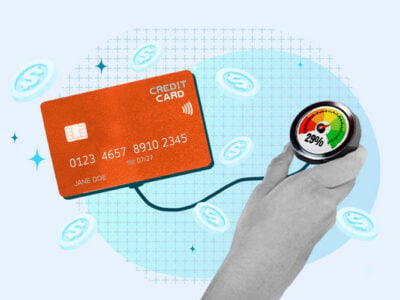Table of Contents
What is FICO score 9?
FICO 9 is a credit scoring model owned by the Fair Isaac Corporation (FICO), who introduced it to creditors in 2014 and consumers in 2016. As with FICO’s older models, such as FICO 8, it scores your credit on a scale from 300 to 850.
Your FICO 9 score indicates how likely you are to repay your debts. Lenders look at it when deciding whether or not to extend lines of credit or offer loans to you.
Different lenders use different FICO scoring models
FICO 9 isn’t the latest scoring model; FICO released its successors, FICO 10 and FICO 10T, in 2020 (and released an alternative model, FICO Score XD, in 2016). FICO 9 also hasn’t completely replaced FICO 8 yet. Lenders get to choose which model they want to use.
Different lenders (and all three credit bureaus) use different versions, which means you have many different FICO credit scores. In addition, FICO scores aren’t the only credit scores—you also have a VantageScore credit score.
All told, FICO has released over 10 general-purpose scoring models, in addition to several industry-specific models, and many of these are currently in use. Currently, the majority of lenders still use FICO 8, but the newer models, including FICO 9, will probably become more popular in the future. 1
Before you apply for a loan (either secured or unsecured), you can try to find out which credit score your prospective lender will check. Your FICO scores are all strongly correlated with each other, so most of them will be fairly similar.
What’s different about FICO 9?
FICO 9 was meant to improve on its predecessors and help lenders more accurately assess the creditworthiness of potential borrowers.
In general, FICO 9 is more lenient towards consumers than FICO 8. It’s relatively forgiving of negative events that FICO believes may be outside your control (such as unexpected medical bills) because these don’t necessarily indicate financial irresponsibility.
Specifically, FICO 9 has three major differences from the previous FICO scoring models:
1. Medical collections
FICO 9 is more forgiving of medical collections than FICO’s older models. While medical bills in collections still hurt your credit, they have a smaller impact on your FICO 9 score than other debts that have been transferred or sold to a debt collection agency. 2
2. Paid collections
Similarly, FICO 9 doesn’t penalize you for having paid collection accounts on your credit report.
This means that if your credit took a hit because you have a debt that was sent to debt collectors, your FICO 9 credit score will recover once you’ve paid it (although the record of the collection account will still remain on your credit report for 7 years, per the Fair Debt Collection Reporting Act). 3
By contrast, FICO’s older scoring models don’t forgive paid collections. In these models, if you have a debt that’s sent to collection, paying it off won’t actually improve your credit score. It will continue to damage your score until the 7-year credit reporting timeline is up (or until you take steps to remove the paid collection account from your report).
It’s worth noting that FICO 9’s successor, FICO 10, also forgives paid collections. So do the latest VantageScore models, VantageScore 3.0 and 4.0.
3. Rental history
Before FICO 9 was released, your rental history didn’t affect your credit score. Now, you can build credit just by paying your rent on time. If your landlord reports your rental payments to the bureaus, FICO 9 will add it to your payment history and factor it into your credit score.
This means that your FICO 9 score might be better than your FICO 8 score, assuming you always pay your rent on time. (Of course, the inverse is also true: your FICO 9 score might fall if you miss your rent payments.)
However, reporting to the credit bureaus is voluntary, and your landlord or property manager isn’t legally required to do so. If they don’t, your FICO 9 score still won’t be affected by your rent payments.
Fortunately, you can add your rental history to your report yourself if you pay your landlord through a rent payment service. For instance, LevelCredit will report your rent payments to TransUnion and Equifax for $6.95 per month. They’ll also add 24 months of past payments for a one-time fee.
Speak to your landlord if you’re not currently using a rent payment service like this and you’re interested in starting.
Who uses FICO 9?
Currently, fewer lenders are using FICO 9 than FICO 8. Lenders can take a long time to switch to newer FICO models, so it may be a few years before FICO 9 becomes widely used.
How to get your FICO 9 score
You can usually get your FICO 9 score for free from your creditor if they participate in FICO’s Open Access Program. Alternatively, you can buy your FICO 9 score at myfico.com for approximately $15–$20 per report.
Takeaway: FICO 9 is kinder to consumers than previous models
- FICO 9 was released to lenders in 2014 and to consumers in 2016.
- In contrast to previous models, FICO 9 is more forgiving toward medical collections than non-medical collections and overlooks paid collection accounts entirely.
- FICO 9 factors your rental history into your credit score. If your landlord doesn’t report to the bureaus, there are rent-reporting service providers that will.
- FICO 9 is not as popular as FICO 8, which most lenders still use.







